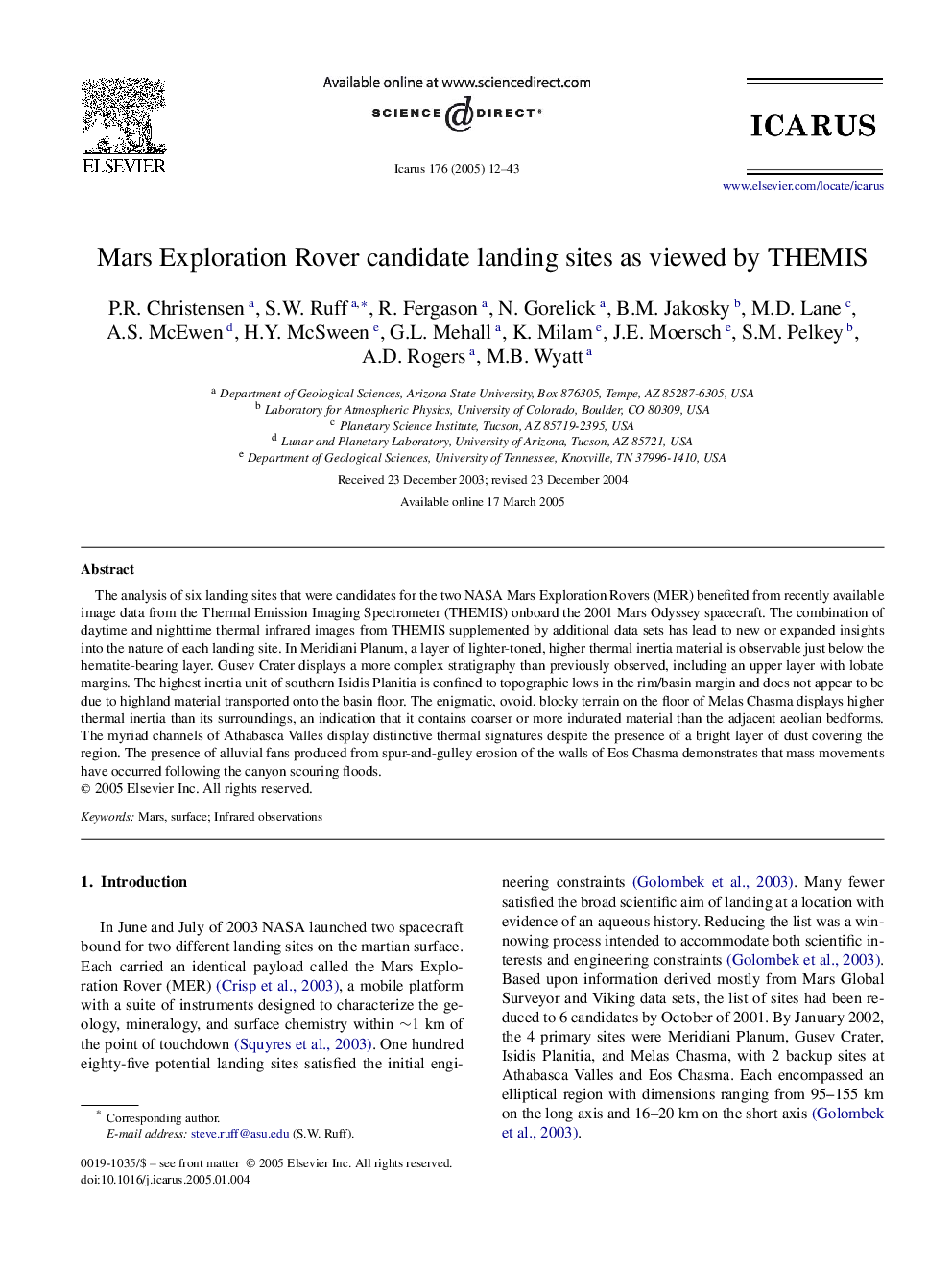| Article ID | Journal | Published Year | Pages | File Type |
|---|---|---|---|---|
| 10701902 | Icarus | 2005 | 32 Pages |
Abstract
The analysis of six landing sites that were candidates for the two NASA Mars Exploration Rovers (MER) benefited from recently available image data from the Thermal Emission Imaging Spectrometer (THEMIS) onboard the 2001 Mars Odyssey spacecraft. The combination of daytime and nighttime thermal infrared images from THEMIS supplemented by additional data sets has lead to new or expanded insights into the nature of each landing site. In Meridiani Planum, a layer of lighter-toned, higher thermal inertia material is observable just below the hematite-bearing layer. Gusev Crater displays a more complex stratigraphy than previously observed, including an upper layer with lobate margins. The highest inertia unit of southern Isidis Planitia is confined to topographic lows in the rim/basin margin and does not appear to be due to highland material transported onto the basin floor. The enigmatic, ovoid, blocky terrain on the floor of Melas Chasma displays higher thermal inertia than its surroundings, an indication that it contains coarser or more indurated material than the adjacent aeolian bedforms. The myriad channels of Athabasca Valles display distinctive thermal signatures despite the presence of a bright layer of dust covering the region. The presence of alluvial fans produced from spur-and-gulley erosion of the walls of Eos Chasma demonstrates that mass movements have occurred following the canyon scouring floods.
Keywords
Related Topics
Physical Sciences and Engineering
Earth and Planetary Sciences
Space and Planetary Science
Authors
P.R. Christensen, S.W. Ruff, R. Fergason, N. Gorelick, B.M. Jakosky, M.D. Lane, A.S. McEwen, H.Y. McSween, G.L. Mehall, K. Milam, J.E. Moersch, S.M. Pelkey, A.D. Rogers, M.B. Wyatt,
